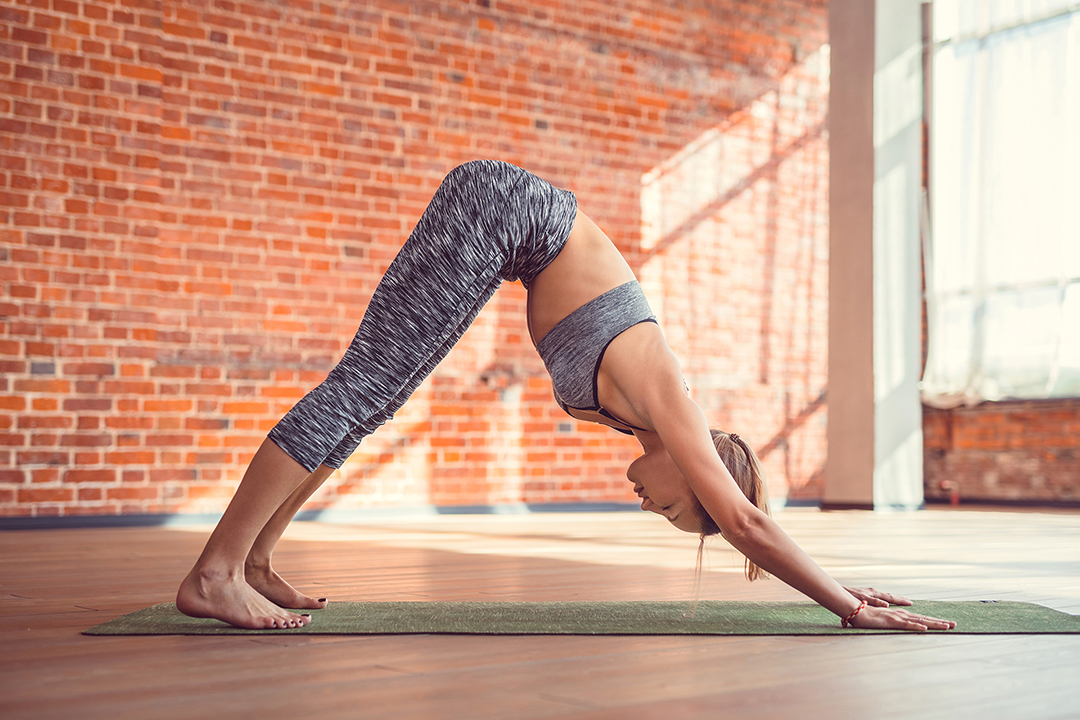As one of our previous recent articles explained, lower back pain is really common. Most often, this pain is caused by mechanical issues, but problems can also sometimes be non-mechanical, and can need further investigation by a medical professional to help with a diagnosis. If you didn’t read our previous back pain blog, we suggest giving it a read first, here.
Lower back pain will usually improve within a few weeks or months with some simple, temporary (or permanent, if necessary) lifestyle changes. Our physios will provide you with advice and a programme of exercises that will help to improve any reduced mobility and/or strength, and will use their knowledge and experience to make sure you have the right exercises and information to help improve your lower back pain and prevent reoccurrence.
SELF-HELP
In the meantime, here are a few pointers that may help your back pain improve in the very acute stages or if you’re unable to get to a physio right away:
- Don’t stop moving – moving is really important when you have pain because it keeps the muscles working. Try to keep moving as normal but if certain movements are too painful then try avoid them temporarily to allow the body not to get to oversensitive to the movement.
- Try some stretches – stretches and flexibility exercises can be very helpful when your movement is restricted or the muscles are very sensitive and tight. At the end of this blog I’ll detail some stretches and exercises that may be helpful to improve your symptoms.
- Hot and cold treatment – this may help to reduce your pain and allow you to move better without pain. Your body may respond to one treatment or both, so give them both a try.
- Get professional help – if your symptoms are not improving, always seek a professional opinion. Usually, pain doesn’t mean permanent damage and a large percentage of back pain is in fact protective in nature. X-rays or MRIs are not always necessary – pain can be caused by many different structures that won’t present on a scan. But by getting a professional diagnosis, your physio or doctor will be able to advise on the best course of action to get you on the road to recovery.
- Pain relief – use pain relief in the form of painkillers if prescribed, or as advised by your GP.
- Stress relief – if life is very stressful and if you think it might be contributing to your pain, then it may be good to evaluate where you could make lifestyle changes and reduce stress levels.
EXERCISES AND REHABILITATION FOR LOWER BACK PAIN:
It’s really useful to know what causes, affects or aggravates your lower back pain because this will guide your treatment. So, if your pain is aggravated by bending or sitting, it means that flexion-type activities should either be temporarily avoided or done differently to help reduce pain. Exercise could involve extension-based movements to help offload the painful structures.
If leaning backward or rising from sitting type movement is the aggravating activity, then extension-based movements should be temporarily avoided or done differently to help reduce pain.
Below are some safe exercises you can have a go at. Everyone’s pain is slightly different, so it’s worth trying one set of exercises first to see if they help. If they don’t, simply try a different set.
LOWER BACK PAIN EXERCISES THAT MAY HELP PAIN ASSOCIATED WITH BENDING/FLEXION.
1. MCKENZIE BACK EXTENSIONS:
- Lying on stomach, place hands in the press up position.
- Slowly perform a press up lifting out the breast bone so as to achieve an even back extension.
- Stop when the front of the pelvis starts to leave the floor.
- Repeat 20-30 times up to 5 times per day if able and if relieving.
- Progress by bringing the hands closer under the shoulders to start
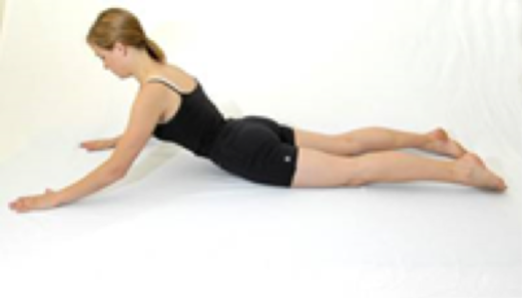
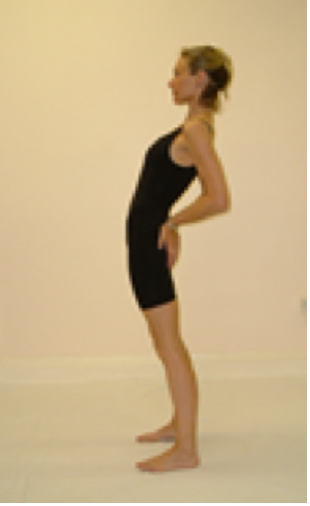
Alternatively, this can be done in standing by pressing your hands on your lower bottom and supporting your weight as your lean back. Don’t hold the movement into pain.
2. THE SHOULDER BRIDGE:
- Lying on your back with your knees bent, engage your deep abdominals.
- Roll the pelvis back and peel the spine up one segment at a time to rest on your shoulder blades; hold for up to 6-10 seconds using the bottom muscles
- Gently peel back down, one segment at a time.
- Repeat 10-15 times.
- Be sure not to lift too high and arch your back into any pain.
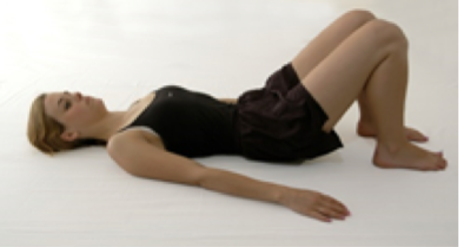
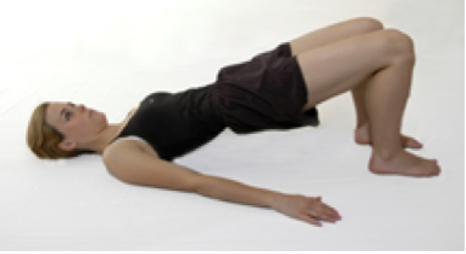
FOR PAIN AGGRAVATED BY BACKWARD BENDING OR LEANING, TRY THE FOLLOWING EXERCISES:
1. KNEES TO CHEST:
- Bring both knees (one at a time) towards the chest and hold for 20 seconds.
- Repeat 5 times and do 2-3 times a day.
- You may add a side-to-side roll to release the lower back
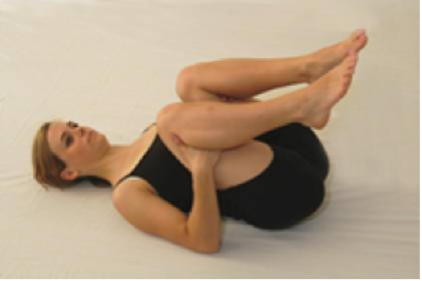
2. CAR:
On all fours check your alignment and engage your deep abdominals
- Gently curl the tailbone under and allow the rest of the spine to follow into a comfortable cat stretch position
- Hold for a few seconds then slowly return to neutral, and gently to arch the other way into extension.
- Repeat 20 times and do 2-3 times a day
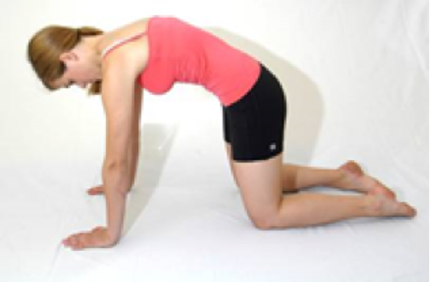
Alternatively, these exercises can be helpful for both:
1. LUMBAR ROTATIONS (KNEE ROLLS):
- Lie on your back with both knees bent up and connected together. Arms are out to the side and the shoulder blades are anchored on the mat.
- Engage the deep abdominals. Gently roll the knees to one side, allowing the head to roll in the opposite direction and return to middle.
- Repeat to the other side.
- Continue alternating 10-20 times in each direction and do 2-3 times a day.
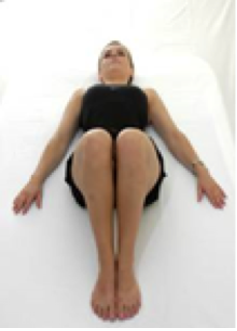

2. PRAYER CHILD’S POSE ROCKING
- On all fours, engage your abdominals. Then slowly sit back onto your heels.
- Press your hands forwards to feel a stretch along the sides of your body and try get your bottom to touch your heels.
- Hold this for 3-5 seconds and then come out of the position and rock forwards a little while arching your back a little as shown in the picture below.
- Repeat 20-30 times and 2-3 times a day if you can.
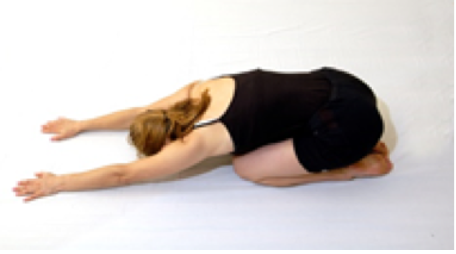
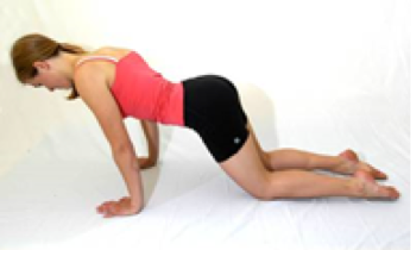
HERE ARE SOME SIMPLE STRENGTHENING/ACTIVATION EXERCISES TO START GETTING YOUR BACK, GLUTEAL AND ABDOMINAL MUSCLES WORKING BETTER:
1. PELVIC TILTS
- Lie on your back with your knees bent up.
- The spine should be in neutral and the deep abdominals engaged.
- Gently squeeze the buttock muscles and roll the pelvis to flatten the low back into the mat.
- Hold the position for 2-3 seconds but don’t hold your breath, then return to neutral.
- Repeat 20 times slowly 1-3 times a day.
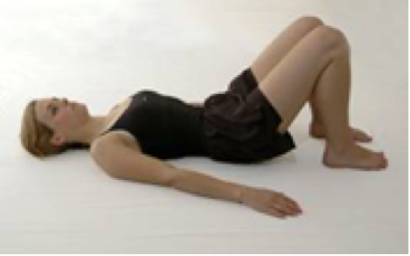
2. LEG LIFTS
- Align the body in neutral and engage your deep abdominals.
- Without allowing the upper abs to tense or the pelvis to move, float one leg up to 90 degrees.
- Repeat 8-10 each side.
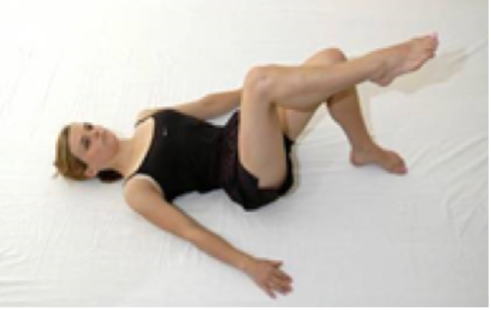
3. FULL SQUATS OR SIT TO STAND
- Perform your squat by leaning forwards with your hands and upper body and folding back(sitting back) at the hip joint, not the spine. The spine should stay in its neutral position.
- Ensure the kneecaps stay in line with the hips and second toe. Return to the start position pressing through the heels to activate the inside quadriceps and buttock muscles.
- Repeat 10-12 times slowly and up to 3 times a day to start. Then you can slowly increase the repetitions and do more at once to fatigue the muscles more.
- If this is too hard then first add a chair to sit down on to help with support or if it feels too painful then don’t perform this exercise.
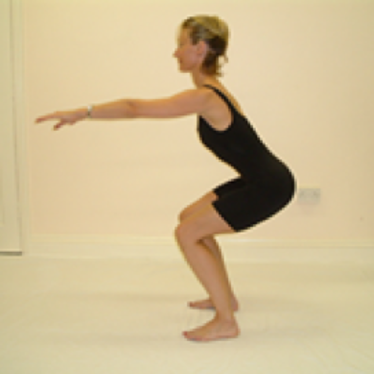
Remember that these exercises are simply guidelines. If you experience more pain while trying them, stop immediately and consult with your GP, or book an appointment at our clinic. We’ll happily advise on treatment options.
